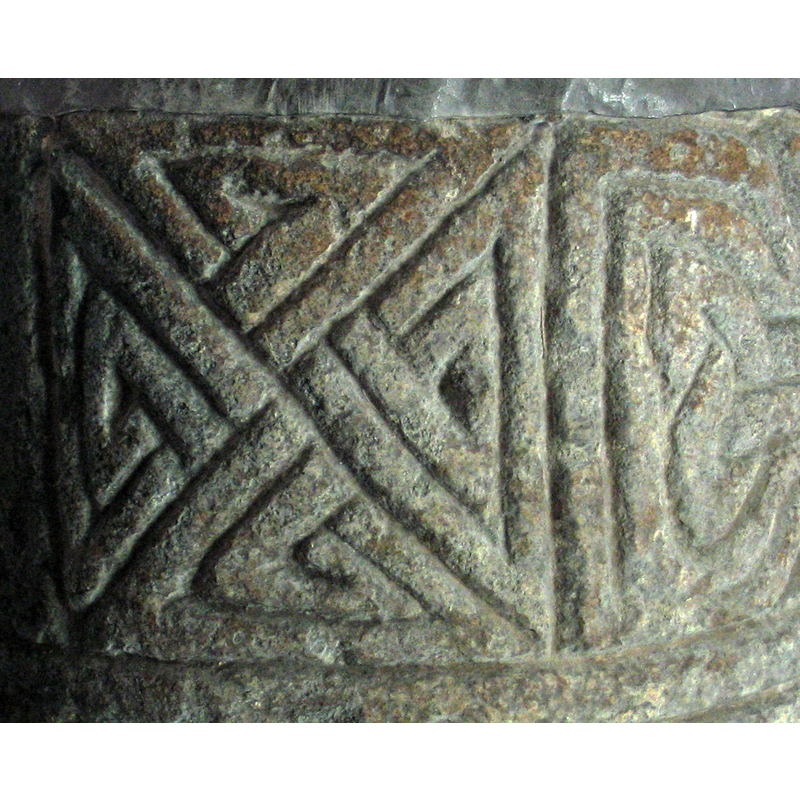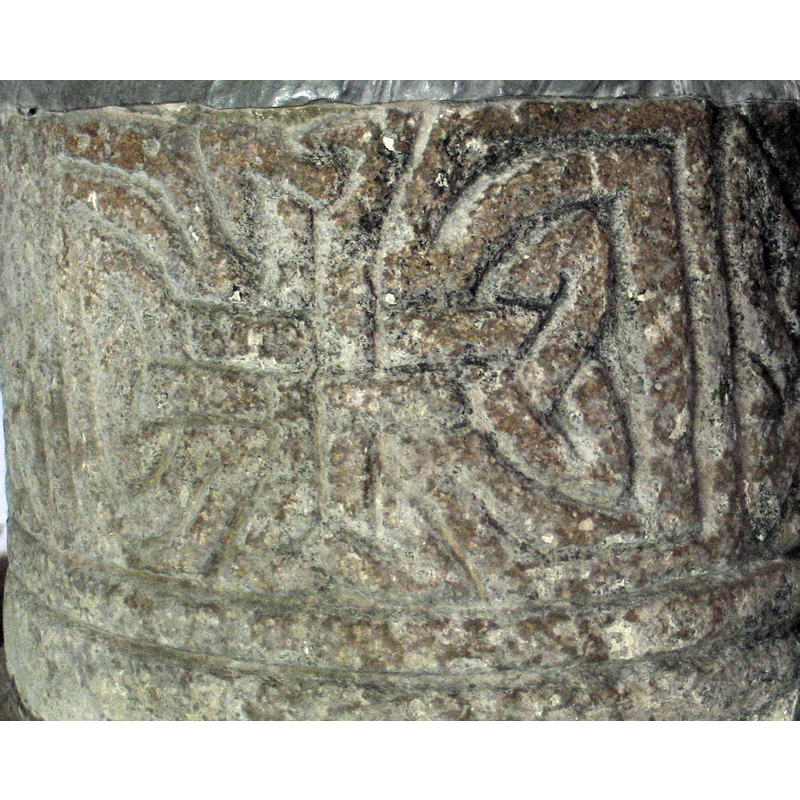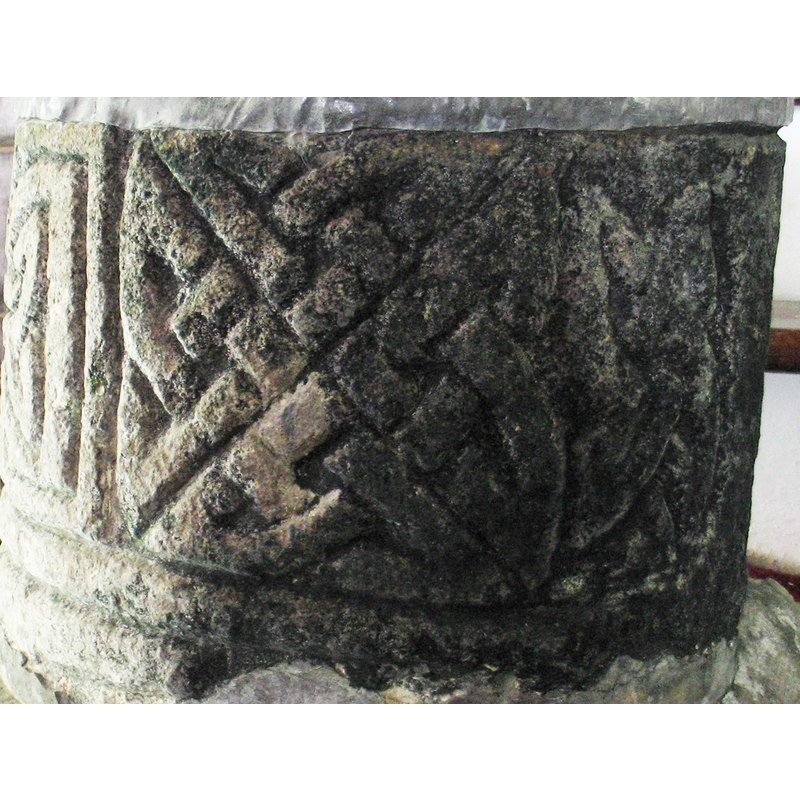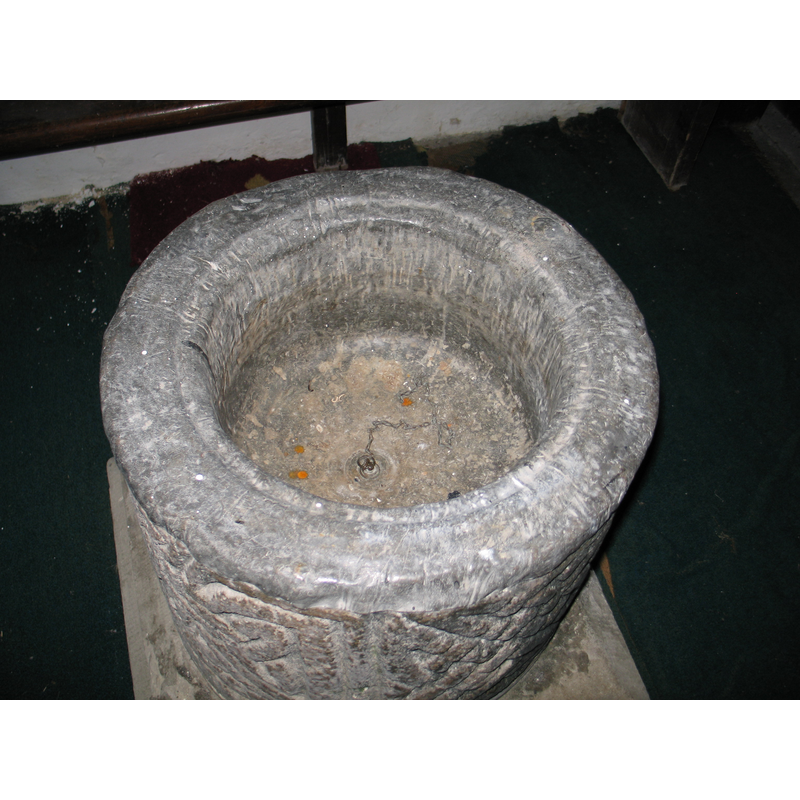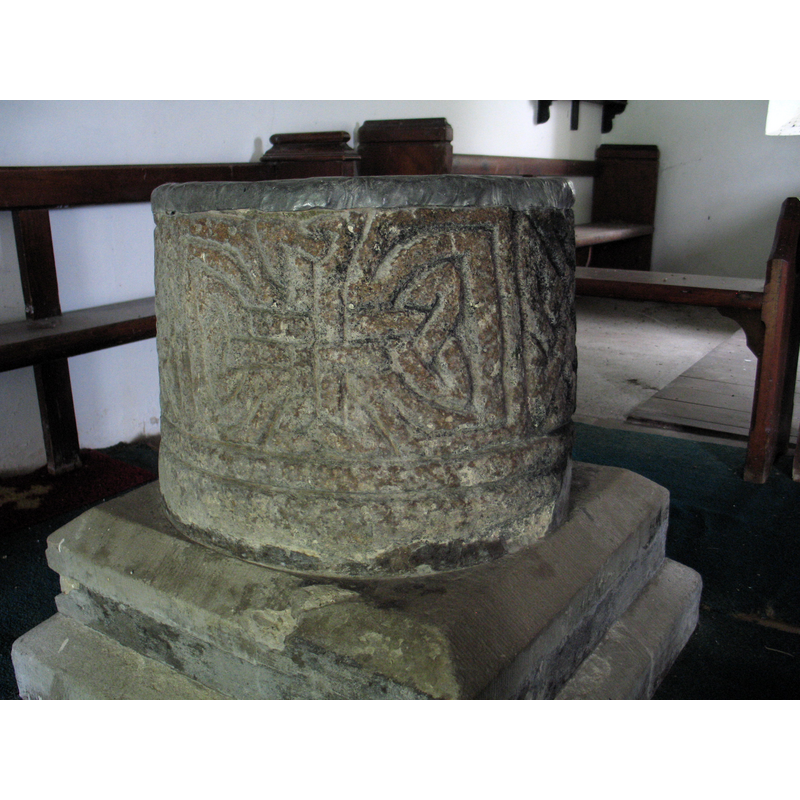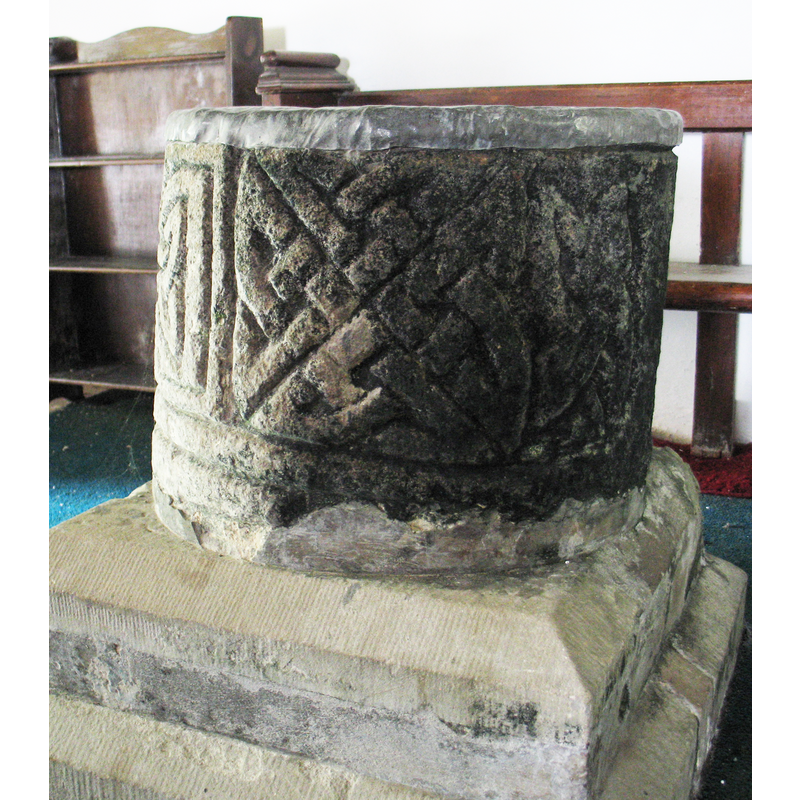Cerrigceinwen / Cerrig Ceinwen
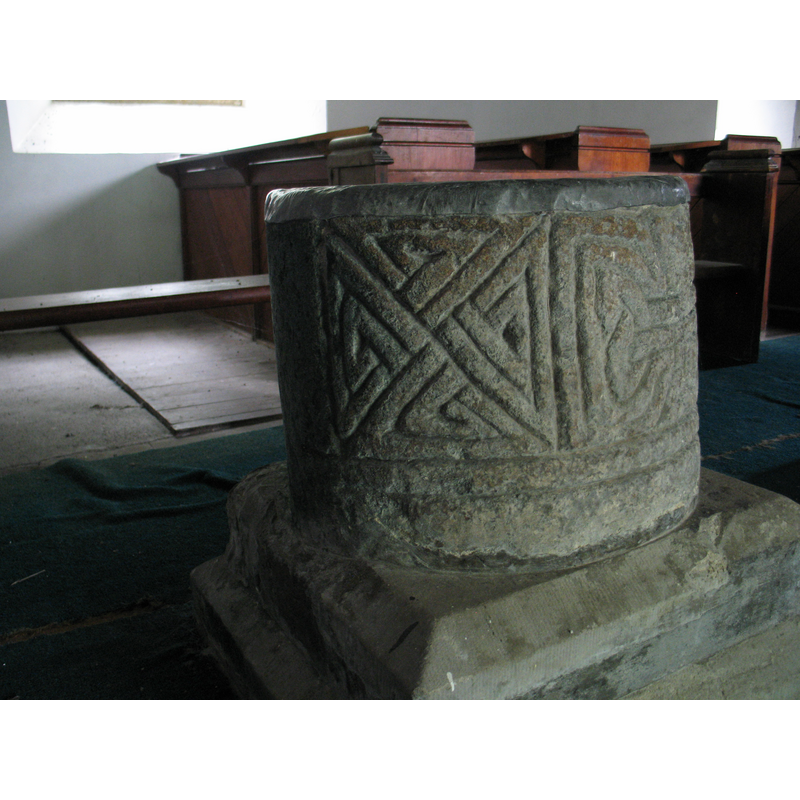
Results: 11 records
B01: design element - patterns - interlace
B02: design element - patterns - interlace - cross
B03: design element - patterns - interlace
view of basin - interior
view of basin - side
view of font
view of font
view of font
view of font - front side
INFORMATION
FontID: 09109CER
Object Type: Baptismal Font1
Church/Chapel: Parish Church of St. Ceinwen
Church Patron Saints: St. Keyne [aka Cain, Ceinwen]
Country Name: Wales
Location: Anglesey, Gwynedd
Directions to Site: Located on the A5, about halfway between Bangor and Holyhead
Font Location in Church: Inside the church
Century and Period: 10th - 11th century / 12th century, Pre-Conquest? / Norman?
Cognate Fonts: [cf. FontNotes]
Credit and Acknowledgements: We are grateful to Dr. Madeleine Gray, of the School of Education/Ysgol Addysg, University of Wales, Newport/Prifysgol Cymru, Casnewydd, for her photographs of this font
Font Notes:
Click to view
Described and illustrated in Nash-Williams (1950): "Tub-shaped font [...] Decorated around the outer wall with four square panels filled variously with interlaced patterns carved in high relief: (a)double-beaded cruciform knot (R.A.724); (b)double-ribbon cross with knotted arm-ends (cf. R.A.733); (c)plain quadruple knot (R.A.732); (d)pair of plain interlinked oval rings (R.A.766). The back is plain. 12th century." The font is shown in Nash-Williams (ibid.) with a flat polygonal cover with a knob handle [NB: Nash-Williams gives the location first as the churchyard, then as inside the church; it was probably found in the former, then moved to the latter]. Described and illustrated by Peter Lord, in Diwylliant... (1998-2003), where he dates the font to the 10th or 11th century; [NB: Lord's argument regarding the limitations of on-site carving is interesting, but perhaps not very accurate, as the evidence indicates that many fonts were carved elsewhere before they were placed in their definite (?) location in the church]. Thurlby (2006) disagrees with Lord's early dating [cf. supra] and indicates his preference for a 12th-century date, as suggested in Nash-Williams and the RCAHM. Noted and illustrated in Pritchard (2009).
MEDIUM AND MEASUREMENTS
Material: stone
Number of Pieces: one
Font Shape: tub-shaped
Basin Interior Shape: round
Basin Exterior Shape: round
Drainage Notes: lead-lined
Diameter (includes rim): 55 cm*
Font Height (less Plinth): 41.25 cm*
Notes on Measurements: *Given in Nash-Williams (1950: 53) as: 22" diam. x 16 1/2" h.]
LID INFORMATION
Date: modern
Material: wood
Apparatus: no
Notes: shown in Nash-Williams (1950: pl. LXI, no. 4) as a flat polygonal cover with a knob handle
REFERENCES
The Visual Culture of Wales = Diwylliant gweledol Cymru, Cardiff: University of Wales Press, 1998-2003
Great Britain. Royal Commission on Ancient Monuments and Constructions in Wales and Monmouthshire, An Inventory of the Ancient Monuments in Wales and Monmouthsire, London: H.M. Stationary Office, 1911-1925
Nash-Williams, Victor Erle, The Early Christian Monuments of Wales, Cardiff: University of Wales Press, 1950
Pritchard, Aimee, "The origins of ecclesiastical stone architecture in Wales", The Early archaeology of the Early-Medieval Celtic churches, Leeds: Maney, 2009
Thurlby, Malcolm, Romanesque architecture and sculpture in Wales, Little Logaston, Woonton, Almeley, Herts.: Logaston Press, 2006
